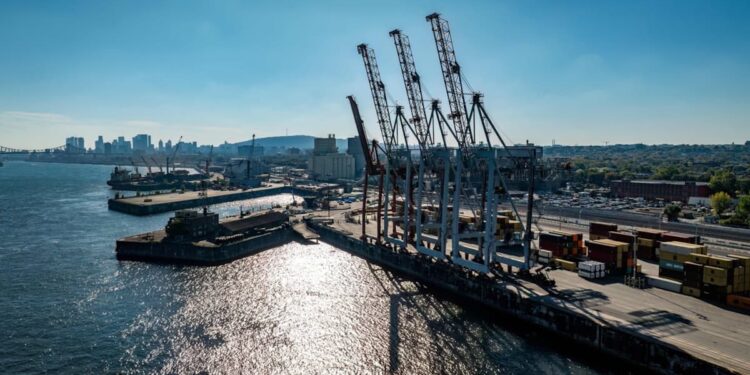Longshore workers at major ports on the East Coast and South of the United States have been on strike since Tuesday, a first in nearly 50 years after the failure of a last-minute attempt at a resolution and barely five weeks before the presidential election. .
• Also read: The American presidential election shaken by three major crises
• Also read: Not just at the port of Montreal: 50,000 longshoremen on strike in the United States
• Also read: “History repeats itself”: the port of Montreal is paralyzed again
“We are ready to fight as long as necessary, to stay on strike as long as it takes, to obtain the salaries and protections that our members deserve,” warned Harold Daggett, boss of the union which has 85,000 members, in a press release.
The longshore workers walked off the job when their six-year labor agreement expired at 11:59 p.m. Monday, after last-minute negotiations between their union and the United States Maritime Alliance (USMX), which represents the employers, failed. of 36 ports scattered from Maine to Texas, via Florida.
The discussions, which began in May, are at an impasse.
Joe Biden “urged” Tuesday the USMX “to present a fair offer to workers” to put an end to a strike with potentially very significant economic consequences.
“Shipping carriers have made record profits since the pandemic,” he noted, stressing that managers and shareholders had benefited.
According to him, “it is only fair that workers, who took risks during the pandemic to keep ports open, also see their salaries increase significantly.”
Contribution
He ruled out the activation of the Taft-Hartley law — already used for ILA strikes — allowing an 80-day moratorium to be imposed.
“It is time for the USMX to negotiate a fair agreement with the longshoremen that reflects their important contribution to our economic recovery,” commented the White House spokesperson.
Former President Donald Trump, who is seeking a new term, estimated in Milwaukee that Joe Biden “should have worked on an agreement between them” and noted that the longshoremen represented “the living force” of the country. “They have been very affected by inflation,” he added.
The USMX defended its offer on Tuesday, recalling that it included a salary increase of “nearly 50%”. According to American media, the union initially demanded 77%.
“We have demonstrated our commitment to doing our part to end the ILA strike which was completely avoidable,” the Alliance said.
But the union responded in the evening, saying the USMX was “distorting the facts and misleading the public” and detailing the working conditions of longshoremen.
The social contract concerns 25,000 members, working in container and vehicle import-export terminals in 14 major ports, including Boston, New York, Philadelphia, Baltimore, Savannah, Miami, Tampa, Houston.
The union had warned on Sunday that all its members would hold picket lines from 12:01 a.m. Tuesday, “joined in solidarity by longshoremen and maritime workers around the world.”
He said that its 45,000 members working in the 36 USMX ports were striking, the first major strike on the American coast since 1977.
The transport of hydrocarbons and agricultural products, or even cruises, should nevertheless be affected only very slightly, if at all.
“Small part”
“We worked during Covid, we never stopped. We allowed the world to continue to function,” recalled Jonita Carter, a longshoreman for 23 years.
She was one of around 200 demonstrators gathered in front of the Maher terminal, one of the largest in Port Elizabeth, the major port of New York-New Jersey.
A little further on, there were about twice as many gathered in front of the APM operator’s terminal.
“We are not asking for much, the small part to which we are entitled,” said Jonita Carter. “With automation, we will lose our jobs.”
In addition to a significant increase in salaries, the ILA is calling for a freeze on all port automation.
Importers and exporters had taken the lead by shipping their products in advance. Others have opted for unloading on the West Coast, which is more costly and time consuming from Europe.
But West Coast ports, covered by a separate social agreement concluded in 2023 which prohibits them from striking, could disrupt activities in solidarity and they have little spare capacity.
Oxford Economics estimates that each week of strike action would reduce US GDP by $4.5 billion to $7.5 billion.
According to the Anderson Economic Group (AEG), the first week of the walkout is expected to cost $2.1 billion, including $1.5 billion in lost goods (such as perishables).



